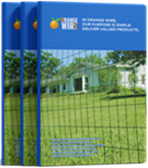All about Welded Wire Mesh: Types, Cost, Materials, Manufacturing and Uses.
Table of Contents
Welded Wire Mesh: A Quick Overview
Introduction
Welded wire mesh, also known as welded wire fabric or welded wire cloth, is a grid-like structure made of intersecting steel or stainless-steel wires welded together at their junctions. The wires run parallel to each other in both horizontal and vertical directions, creating a uniform, square or rectangular pattern. This structure provides excellent strength, stability, and flexibility, making it a popular choice for various applications.
Welded wire mesh is a versatile, cost-effective, and durable solution for various applications across industries. From construction and agriculture to fencing and transportation, this material has become an indispensable part of our daily lives. In this comprehensive guide, we’ll delve into the world of welded wire mesh, covering its types, manufacturing process, applications, advantages, and selection criteria. So, let’s begin our journey and explore this amazing material in detail.
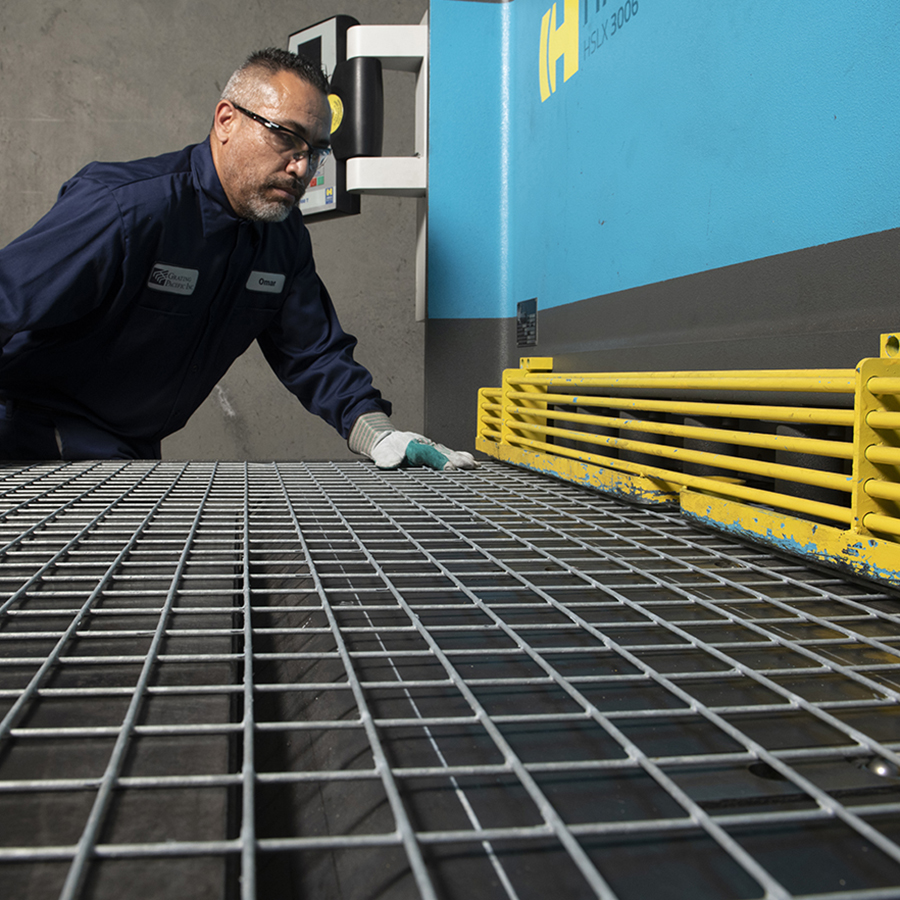
Key Applications
Construction:
As a reinforcing material in concrete structures, welded wire mesh helps distribute the load evenly and prevent cracks. It is also used for partition walls, ceilings, and flooring.
Fencing:
Welded wire mesh is an ideal choice for security fencing, animal enclosures, and garden fencing due to its strength, durability, and cost-effectiveness.
Agriculture:
In agriculture, welded wire mesh is used for crop protection, livestock fencing, and greenhouse structures, providing a safe and secure environment for both plants and animals.
Transportation:
Welded wire mesh is used in road construction, railway tracks, and bridge reinforcement, ensuring the longevity and stability of these critical infrastructures.
Industrial:
In various industrial settings, welded wire mesh is used for filtration, screening, and separation processes. It can also be found in machine guards, storage cages, and pallet racking systems.
Architectural:
Architects and designers incorporate welded wire mesh into their projects for aesthetic and functional purposes, such as façades, sunscreens, and decorative panels.
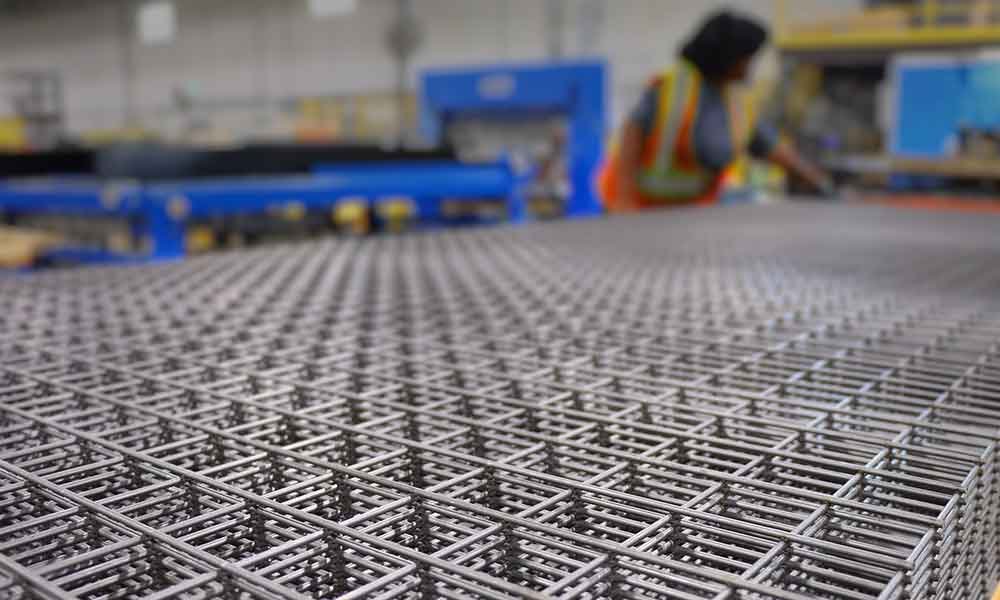
Exploring the Different Types of Welded Wire Mesh
Introduction
Welded wire mesh is a highly resourceful material used in various industries due to its unique properties and broad range of applications.
According to the different raw materials, we can divide the welded wire mesh into “stainless steel welded wire mesh, galvanized welded wire mesh, and PVC coated welded wire mesh.” However, based on the different appearances, we can also divide the welded wire mesh into “welded wire panels, welded wire rolls, welded wire fabric, reinforcing wire mesh for concrete, and welded wire mesh sheets.”
In this comprehensive guide, we will delve deeper into the different types of welded wire mesh. We’ll discuss their unique characteristics and typical uses. Let’s dive into the world of welded wire mesh and explore these fascinating materials.
Different Raw Materials
Stainless Steel Welded Wire Mesh
Characteristics
Stainless steel welded wire mesh is known for its exceptional corrosion resistance and high strength, making it an ideal choice for applications in harsh environments or where hygiene is a priority. The material’s natural resistance to rust and staining ensures its durability and longevity in various settings.
Applications
Stainless steel welded wire mesh is commonly used in the following industries:
Food processing: Due to its corrosion resistance and hygienic properties, stainless steel welded wire mesh is an excellent choice for use in food processing facilities, where cleanliness is crucial.
Pharmaceutical: Similarly, the pharmaceutical industry requires high levels of hygiene and corrosion resistance, making stainless steel welded wire mesh a popular choice.
Chemical processing: The corrosion resistance of stainless steel welded wire mesh makes it suitable for use in chemical processing plants where exposure to corrosive substances is common.
Marine environments: Stainless steel’s resistance to rust and staining makes it an ideal material for marine applications, such as underwater structures and coastal installations.
Galvanized Welded Wire Mesh
Characteristics
Galvanized welded wire mesh features a protective zinc coating that offers excellent resistance to rust and corrosion. This type of welded wire mesh is suitable for outdoor applications where exposure to the elements is a concern.
Applications
Common applications of galvanized welded wire mesh include:
Fencing: Galvanized welded wire mesh is often used in fencing applications due to its durability and resistance to rust and corrosion.
Agriculture: In agricultural settings, galvanized welded wire mesh is used for animal enclosures, crop protection, and greenhouse structures.
Construction: Galvanized welded wire mesh is used as reinforcement in concrete structures and as protective barriers in construction projects.
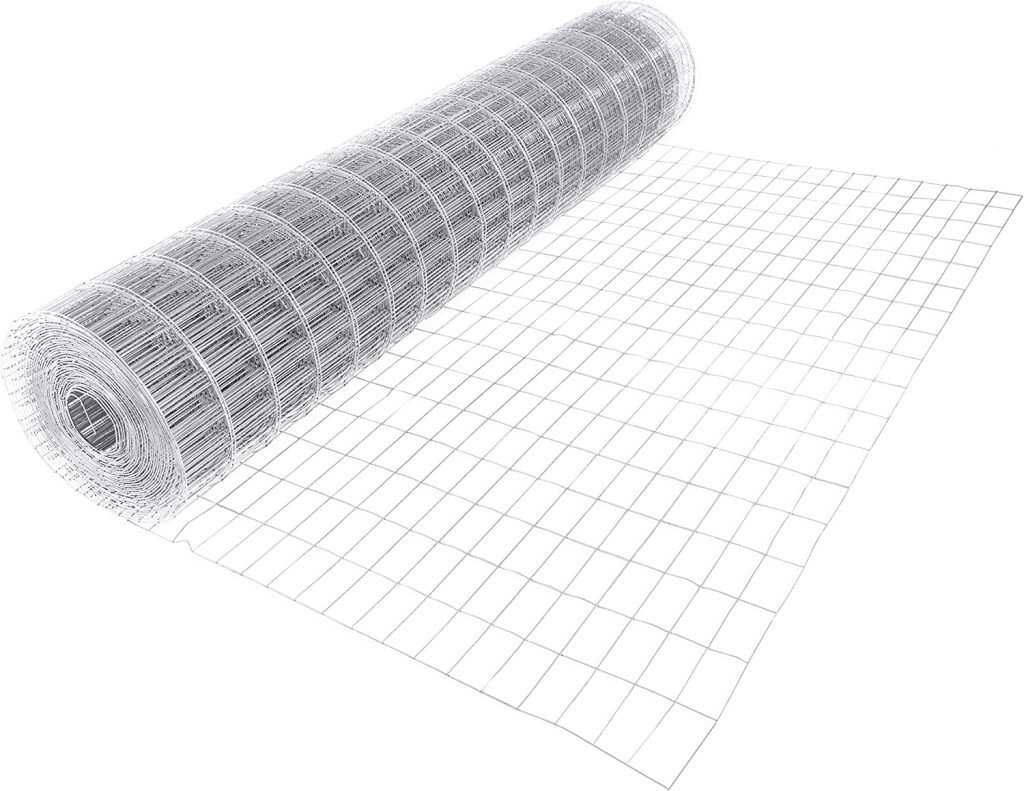
PVC Coated Welded Wire Mesh
Characteristics
PVC coated welded wire mesh features a layer of polyvinyl chloride (PVC) coating, which provides resistance to weathering, corrosion, and chemical exposure. This type of welded wire mesh is widely used in outdoor applications where durability and longevity are essential.
Applications
Typical applications of PVC coated welded wire mesh include:
Fencing: PVC coated welded wire mesh is popular for fencing applications due to its weather resistance and low-maintenance properties.
Landscaping: The PVC coating makes this type of welded wire mesh suitable for use in landscaping projects, such as retaining walls, plant supports, and decorative features.
Outdoor structures: PVC coated welded wire mesh is used in outdoor structures like playground equipment, park benches, and trash receptacles due to its durability and resistance to weathering.
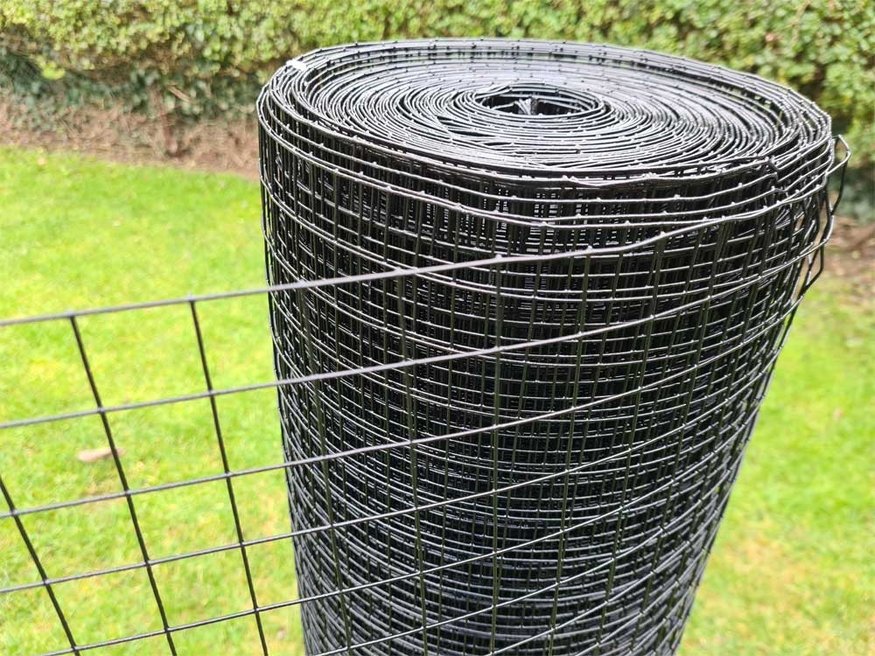
Different Appearances
Welded Wire Panels
Characteristics
Welded wire panels are pre-fabricated, rigid structures made from intersecting steel or stainless-steel wires that are welded together at their junctions. They are available in various sizes, wire diameters, and mesh patterns. Panels are often used in fencing applications, such as security fences, animal enclosures, and garden fences, due to their strength and stability.
Advantages of Welded Wire Panels
Easy installation: Welded wire panels are pre-fabricated, making them quick and easy to install.
Rigidity: These panels provide a rigid structure that is ideal for fencing applications.
Customizable: Panels can be manufactured in various sizes, wire diameters, and mesh patterns to suit specific needs.
Welded Wire Rolls
Characteristics
Welded wire rolls, also known as welded wire mesh rolls, consist of steel or stainless-steel wires that are welded together at their intersections to create a flexible, grid-like structure. These rolls are available in a variety of wire diameters, mesh sizes, and lengths, making them suitable for a wide range of applications.
Advantages of Welded Wire Rolls
Versatility: Welded wire rolls can be cut to size and shaped to fit various applications.
Flexibility: The flexible nature of welded wire rolls allows for easy installation and adaptation to uneven surfaces.
Economical: Purchasing welded wire mesh in rolls can be cost-effective for large-scale projects.
Welded Wire Fabric
Characteristics
Welded wire fabric, sometimes referred to as welded wire cloth, is a lightweight, flexible material made from fine wires that are welded together to form a grid-like structure. This type of mesh is commonly used for filtration, screening, and separation processes, as well as decorative applications.
Advantages of Welded Wire Fabric
Lightweight: Welded wire fabric is lightweight and easy to handle, making it suitable for delicate applications.
Filtration capabilities: The fine mesh size of welded wire fabric makes it ideal for filtration and screening processes.
Aesthetic appeal: The fine, grid-like appearance of welded wire fabric makes it an attractive choice for decorative purposes.
Reinforcing Wire Mesh for Concrete
Characteristics
Reinforcing wire mesh, specifically designed for use in concrete applications, is made from steel wires that are welded together at their intersections. This type of welded wire mesh provides added strength and support to concrete structures, helping to distribute load evenly and prevent cracking.
Advantages of Reinforcing Wire Mesh for Concrete
Structural integrity: Reinforcing wire mesh increases the strength and durability of concrete structures.
Crack prevention: The evenly distributed support provided by reinforcing wire mesh helps prevent cracks from forming in concrete.
Easy installation: Reinforcing wire mesh can be easily incorporated into concrete structures during the construction process.
Welded Wire Mesh Sheets
Characteristics
Welded wire mesh sheets are flat, pre-cut sections of welded wire mesh, made from steel or stainless-steel wires welded together at their intersections. These sheets are available in various sizes, wire diameters, and mesh patterns, making them suitable for a wide range of applications, including construction, industrial, and architectural uses.
Advantages of Welded Wire Mesh Sheets
Customizability: Welded wire mesh sheets can be cut to specific sizes and shapes, allowing for greater flexibility in their application.
Easy installation: The pre-cut nature of welded wire mesh sheets simplifies the installation process, saving time and labor costs.
Wide range of uses: Welded wire mesh sheets are suitable for various applications, including construction, industrial, and architectural projects.
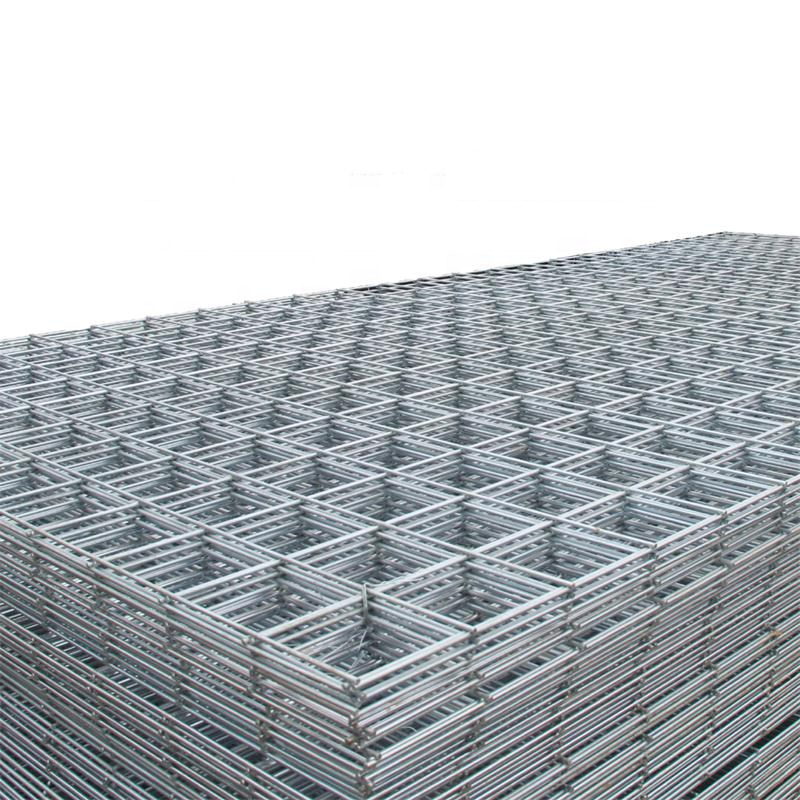
Welded Wire Mesh: Cost
Introduction
In this comprehensive guide, we’ll explore the different aspects of welded wire mesh, including its cost and materials, to help you make an informed decision when purchasing or using it in your projects.
Cost of Welded Wire Mesh
Factory Cost of Welded Wire Mesh
The factory cost of welded wire mesh can be influenced by several factors, including raw material prices, labor costs, manufacturing processes, and energy consumption. In this section, we will discuss these factors and how they impact the overall factory cost of welded wire mesh.
Raw Material Prices
The primary raw materials used in the production of welded wire mesh are steel wires, which can be stainless steel, galvanized steel, or PVC-coated steel. The cost of these materials is subject to fluctuations in global market prices, which can directly impact the factory cost of welded wire mesh.
Labor Costs
Labor costs are another significant factor affecting the factory cost of welded wire mesh. Skilled labor is required for the manufacturing process, including operating machinery, welding, and quality control. Labor costs can vary depending on the location of the factory, wage rates, and employee benefits.
Manufacturing Processes
The manufacturing process of welded wire mesh involves several steps, including wire drawing, welding, cutting, and packaging. Each stage requires specialized machinery, tools, and equipment, which can contribute to the overall factory cost. The efficiency of the manufacturing process, as well as the level of automation used, can also influence the cost.
Energy Consumption
The production of welded wire mesh requires a significant amount of energy, particularly during the welding process. Factories must consider the cost of electricity and other energy sources when calculating the overall cost of producing welded wire mesh.
Additional Factors
Other factors that can impact the factory cost of welded wire mesh include transportation costs, taxes, and tariffs, which can vary depending on the location of the factory and the destination of the final product. Additionally, factories must consider the costs associated with quality control, research and development, and marketing efforts.
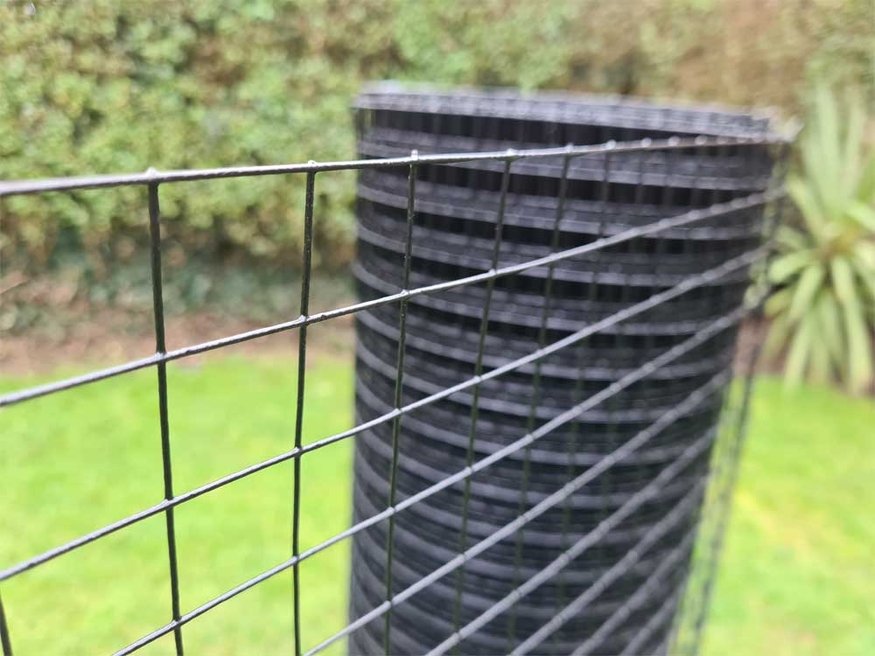
Factors Affecting the Cost of Welded Wire Mesh
Material
The type of material used in the production of welded wire mesh significantly impacts its cost. Stainless steel is the most expensive option due to its high corrosion resistance and strength. Galvanized steel is more affordable but may not offer the same level of corrosion resistance as stainless steel. PVC-coated steel is a cost-effective option that provides added protection against corrosion and weather elements.
Mesh Size and Wire Diameter
The size of the openings in the mesh and the diameter of the wires used also affect the cost. Smaller mesh sizes and thicker wires typically result in a higher price.
Customization
Customized welded wire mesh, such as specific dimensions, shapes, or coatings, may increase the overall cost.
The Cost of Welded Wire Mesh: Overseas vs. USA
Material Costs
The cost of raw materials, such as steel wires, can vary depending on the country of origin. In some countries, raw materials may be more affordable due to lower production costs or abundant local resources. This could lead to a lower overall cost for welded wire mesh from overseas manufacturers. However, it is crucial to consider the quality of the materials, as cheaper materials may not always provide the same level of durability and performance.
Labor Costs
Labor costs can significantly differ between overseas and the USA, with overseas countries often having lower labor costs due to differences in wage rates and living costs. This can result in lower production costs for welded wire mesh manufactured overseas, making it a more cost-effective option. However, lower labor costs may sometimes be associated with poorer working conditions or less stringent quality control measures, which could affect the final product’s quality.
Transportation Costs
Transportation costs play a significant role when comparing the cost of welded wire mesh from overseas manufacturers and those in the USA. Shipping costs can be substantially higher when importing from overseas, which may offset the lower production costs. Additionally, longer shipping times may impact project timelines and could be a disadvantage when sourcing welded wire mesh from overseas.
Import/Export Regulations
Import and export regulations can also impact the cost of welded wire mesh from overseas compared to the USA. Import duties, taxes, and tariffs may apply when importing welded wire mesh, which can increase the overall cost. Additionally, import/export regulations and trade agreements between countries can affect the availability and cost of welded wire mesh from different regions.
Quality and Standards
The quality and standards of welded wire mesh may vary between overseas and USA manufacturers. US manufacturers are likely to adhere to strict quality control measures and industry standards, ensuring a high-quality, reliable product. However, this may come at a higher cost. Overseas manufacturers may offer more competitive prices but may not always meet the same quality standards or comply with specific industry regulations.
Materials Used in Welded Wire Mesh
Stainless Steel
Stainless steel is a popular choice for welded wire mesh due to its excellent corrosion resistance and high strength. It is an alloy of iron and chromium, with the chromium content providing the corrosion resistance. Stainless steel welded wire mesh is suitable for applications in harsh environments and can withstand exposure to chemicals, saltwater, and extreme temperatures. Its durability and resistance to rust make it an ideal choice for long-lasting projects, although it can be more expensive than other materials.
Galvanized Steel
Galvanized steel is another common material used in the production of welded wire mesh. It is made by coating steel wires with a layer of zinc, which protects the steel from corrosion. The galvanization process can be done either before or after the welding process, resulting in pre-galvanized or post-galvanized welded wire mesh, respectively. While galvanized steel is not as resistant to corrosion as stainless steel, it offers a good balance between cost and durability. Galvanized steel welded wire mesh is commonly used in fencing, construction, and agricultural applications.
PVC-Coated Steel
PVC-coated steel is a cost-effective option for welded wire mesh. The steel wires are coated with a layer of polyvinyl chloride (PVC) material, providing added protection against corrosion, chemicals, and weather elements. PVC coating also enhances the appearance and UV resistance of the wire mesh, making it ideal for outdoor applications such as fencing, gardening, and landscaping. The PVC coating is available in various colors, allowing for customization to match specific project requirements.
Low Carbon Steel
Low carbon steel is another material option for welded wire mesh. It is an economical choice, but it does not offer the same level of corrosion resistance as stainless steel or PVC-coated steel. Low carbon steel welded wire mesh is often used for temporary projects or applications where corrosion resistance is not a priority. To increase its corrosion resistance, low carbon steel can be galvanized or PVC-coated.
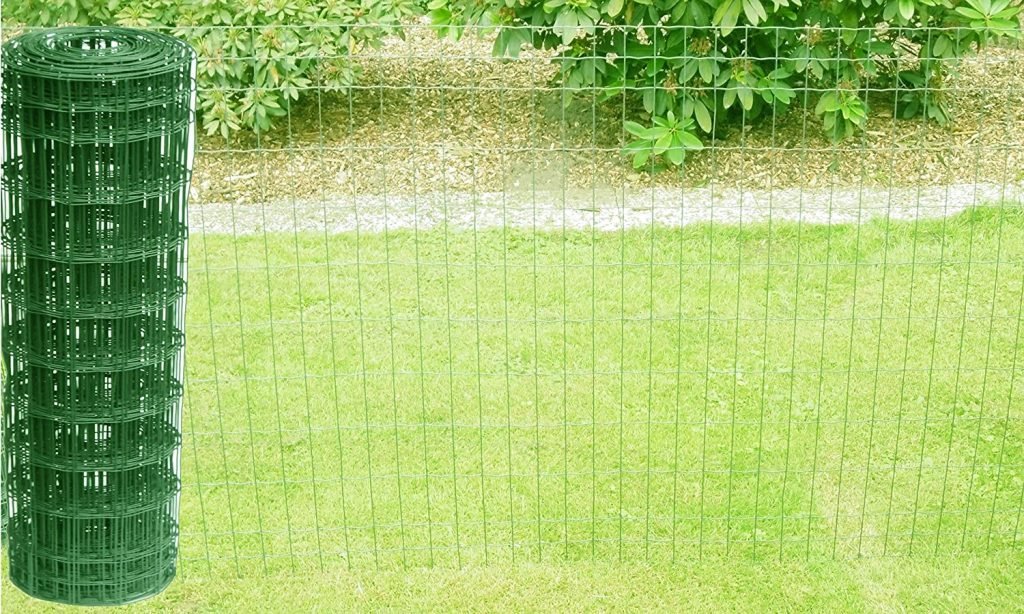
From Mesh Size to Coating Type: How to Specify Welded Wire Mesh
Material Selection
As discussed earlier, the choice of material used in welded wire mesh production directly impacts its performance and durability. Common materials include:
Stainless steel: Offers excellent corrosion resistance and high strength
Galvanized steel: Provides a balance between cost and durability
PVC-coated steel: Combines corrosion resistance with aesthetic appeal
Low carbon steel: An economical choice, suitable for temporary projects or applications where corrosion resistance is not a priority
Consider the environment and specific application requirements when selecting the appropriate material for your project.
Mesh Size and Wire Gauge
Welded wire mesh comes in various mesh sizes and wire gauges, which can affect its strength, flexibility, and appearance. Mesh size refers to the size of the openings between the wires, while wire gauge refers to the thickness of the wires themselves.
When you work with a company that makes welded wire mesh, you have power over your order. When you need just the right material for the job, variety and flexibility are key. There are several things to think about when choosing your mesh.
Wire Spacing: Welded wire mesh can be made in square or rectangular grids with clear openings or with wires spread evenly from center to center (” Mesh”). The spacing can be set to be the same across the whole wire mesh panel, or it can be changed to fit the business and use.
Wire Gauge: Most standards for welded wire mesh are made with wire that has a round cross section. If you want to avoid misunderstanding, always write diameters as decimals of an inch or in millimeters if you can.
Panel Dimensions and Edge Conditions: You can buy welded wire mesh panels in any size and shape you want by giving a width and length. You can also choose to have the edges trimmed or not clipped.
A Table of Welded Wire Mesh
Dimension | Material | Wire Diameter | Mesh Size | Surface Treatment | Weight per Square Foot | Tensile Strength |
4′ x 8′ | Hot Dipped Galvanized Steel | 0.177 inch | 2 inch | Galvanized | 0.90 lbs. | 60,000 psi |
5′ x 10′ | Stainless Steel 304 | 0.080 inch | 1/2 inch | Electro-polished | 0.47 lbs. | 185,000 psi |
6′ x 12′ | PVC Coated Galvanized Steel | 0.105 inch | 4 inch | PVC Coated | 1.47 lbs. | 75,000 psi |
3′ x 6′ | Aluminum Alloy 5052 | 0.080 inch | 1 inch | Anodized | 0.37 lbs. | 33,000 psi |
8′ x 8′ | Bare Copper | 0.148 inch | 3 inch | None | 2.37 lbs. | 32,000 psi |
From Wire to Fence: The Process of Making Welded Wire Mesh
Wire Drawing
The manufacturing process begins with wire drawing, wherein steel rods made of low carbon or stainless steel are drawn through a series of dies to reduce their diameter and achieve the desired wire gauge. This process also strengthens the wire through work hardening, preparing it for the subsequent welding process.
Welding
After the wire drawing process, the wires are arranged in a grid pattern with parallel wires running horizontally and vertically. They are then welded together at each intersection using electric resistance welding (ERW) or spot welding techniques. Both methods create strong bonds between the wires, ensuring a sturdy and durable welded wire mesh.
Electric Resistance Welding (ERW)
In electric resistance welding, an electric current is passed through the contact points between the wires, generating heat due to electrical resistance. The heat melts the metal at the contact points, and pressure is applied to fuse the wires together, creating a strong bond. ERW is an efficient and precise method for producing welded wire mesh.
Spot Welding
Spot welding is another technique used in the production of welded wire mesh. In this process, concentrated heat and pressure are applied at specific points to create strong bonds between the wires. Spot welding is known for its precision, efficiency, and minimal heat-affected zone, which helps maintain the overall strength and integrity of the wire mesh.
Cutting and Shaping
After the welding process, the welded wire mesh is cut and shaped according to the desired dimensions. This process may involve cutting the mesh into panels or rolling it into coils. Cutting and shaping can be done using various tools and machinery, such as shearing machines, guillotine cutters, or CNC-controlled cutting machines.
Surface Treatment
Depending on the material used and the specific requirements of the project, the welded wire mesh may undergo surface treatments to enhance its corrosion resistance and appearance. These treatments can include:
- Galvanizing: Applying a protective zinc coating to steel wires, either before or after welding, to protect against corrosion.
- PVC coating: Coating the wires with a layer of polyvinyl chloride (PVC) material to improve corrosion resistance, UV resistance, and appearance.
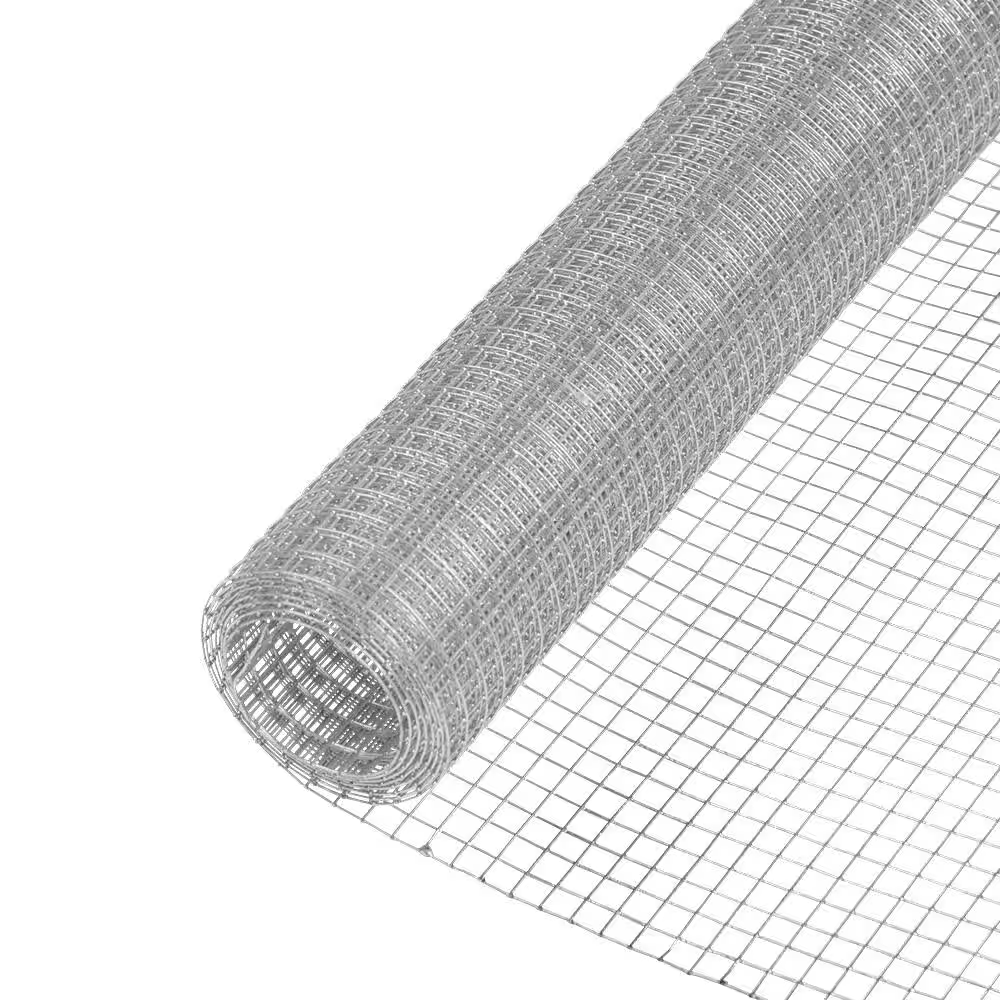
Hot-Dipped Galvanized Welded Wire Mesh
For hot-dipped galvanized welded wire mesh, the welding process is followed by a galvanization process. The welded wire mesh is submerged in a bath of molten zinc, which forms a protective layer on the wire surface, providing excellent corrosion resistance. There are two main methods for hot-dipped galvanization:
- Pre-galvanization: In this method, the steel wires are galvanized before welding, ensuring an even coating. However, the welding process can damage the zinc coating at the intersection points, which may require additional treatment to restore corrosion resistance.
- Post-galvanization: In this method, the welding process is performed first, followed by the galvanization process. This ensures that the entire welded wire mesh, including the welded intersections, is protected by the zinc coating. However, the process can be more complex and time-consuming than pre-galvanization.
PVC-Coated Welded Wire Mesh
For PVC-coated welded wire mesh, the welding process is followed by the application of a PVC coating. The coating enhances the wire mesh’s corrosion resistance, UV resistance, and appearance. The process involves the following steps:
- Pre-treatment: The welded wire mesh is cleaned and prepared for the PVC coating. This may involve removing any surface contaminants or applying a primer for better adhesion.
- PVC coating: The wire mesh is passed through a PVC powder, which adheres to the wire surface. The coated mesh is then heated, causing the PVC powder to melt and form a uniform layer around the wires.
- Cooling and curing: The PVC-coated welded wire mesh is allowed to cool, and the PVC coating hardens, providing a durable and attractive finish.
Quality Control and Inspection
Throughout the manufacturing process, quality control measures are implemented to ensure that the welded wire mesh meets industry standards and customer specifications. This may involve visual inspections, dimensional checks, weld strength testing, and checking the integrity of the surface treatments.
Packaging and Shipping
The final stage involves packaging the welded wire mesh for shipping, either as rolls or flat panels. Protective packaging materials, such as plastic wrap or wooden crates, may be used to prevent damage during transportation. The packaged welded wire mesh is then shipped to customers or distributors for use in various applications.
Conclusion of The Manufacturing
The manufacturing process of welded wire mesh involves several stages, including wire drawing, welding, surface treatment, cutting, and packaging. With a focus on hot-dipped galvanized and PVC-coated welded wire mesh, we have explored the various techniques and methods employed in their production. Each stage plays a crucial role in ensuring the final product is high-quality, durable, and suitable for a wide range of applications.
By understanding the manufacturing process, you can better appreciate the work that goes into creating this versatile and reliable material. When choosing welded wire mesh for your projects, consider factors such as the material, mesh size, wire gauge, and surface treatment to ensure you select the best option for your specific requirements.
Conclusion
Types
Welded wire mesh is a versatile and durable material extensively used across various industries, including construction, agriculture, and fencing. With a range of types available, such as stainless steel, galvanized steel, and PVC-coated steel, each offers different levels of corrosion resistance, strength, and affordability to cater to diverse project requirements.
Cost
The cost of welded wire mesh varies depending on factors such as material, wire gauge, mesh size, and surface treatment. By understanding the materials and manufacturing processes, including wire drawing, welding, and surface treatments like hot-dipped galvanization or PVC coating, one can better appreciate the intricacies involved in producing high-quality welded wire mesh.
Manufacturing
The manufacturing process also plays a significant role in ensuring the durability and performance of welded wire mesh. Proper quality control and inspection measures throughout the process guarantee that the final product meets industry standards and customer specifications.
Applications
Welded wire mesh has numerous applications, such as reinforcing concrete structures, providing security fencing, serving as a support framework in agriculture, and enhancing the aesthetic appeal of landscape designs. Its diverse uses, coupled with its adaptability and durability, make welded wire mesh an indispensable material in various sectors.
In conclusion, welded wire mesh is a valuable material with a broad range of applications, made possible by its various types, materials, and manufacturing processes. By considering factors such as cost, material selection, and intended use, you can make an informed decision when choosing the best welded wire mesh for your specific needs.








